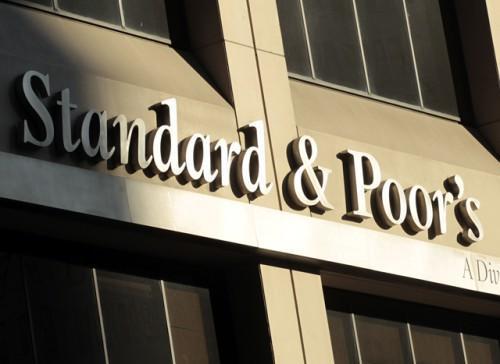What are bonds?
Are you wondering what bonds are? Then you have arrived at the right place! In this article we describe the meaning of a bond in detail.
What are bonds?
A bond is a loan issued by the government or by a company. Bonds are debt securities. When you buy a bond, you usually receive a pre-agreed interest rate. It is also possible to trade actively in the value of bonds. On this page you can read what a bond is and what to look out for.
Bond explanation: what does a bond consist of?
A bond consists of several parts. The meaning of a bond can be deduced from this:
- Denomination: the amount of the bond.
- Interest: the interest you receive on the bond.
- Maturity: The period after which the bond is repaid.
A short explanation of bonds
- Bonds are debts issued by companies or governments.
- Bonds are by definition fixed income securities. This income is paid with interest.
- Bond prices move in the opposite direction of the interest rates. When interest rates increase, bond prices decrease. In contrast, when interest rates fall, bond prices increase.
- Bonds have an expiration date on which the nominal amount must be repaid. If this does not happen, the issuer can be declared bankrupt.
How does bond trading work?
Bond trading occurs through a primary and secondary market. On the primary market, the bonds are issued. This is often done through several banks in denominations of $1000, or a multiple thereof. The bonds intended for the private market are generally cheaper than those intended for institutional parties.
When you have bought a bond, you can usually trade it back on the secondary market. The price of a bond may fluctuate due to changes in market conditions. By buying and selling bonds at the right time, you can achieve a positive return.
The value of a bond
On the secondary market, a bond’s value can fluctuate. The face value can be $100, but it can be traded for $102. In this case, you pay 2% more than the amount you receive at the end of the term. This can happen when the market rate is lower than that of the bond.
What are the benefits of bonds?
Bonds are mainly bought by investors to bring more stability to their portfolio: the risks of bonds are much lower than the risks of shares. Only when the bond provider goes bankrupt, there a possibility that you will lose your money. In most cases, you will receive the agreed interest plus repayment.
A major disadvantage of investing in shares is the fact that there is no certainty. Prices can rise enormously but have also shown big declines in recent years. It is therefore wise to spread your risks as much as possible. By buying bonds you can compensate as much as possible for your losses in the case of falling stock prices.
How can you make a profit with bonds?
Now that you know what a bond is, we can explain to you how you can make a profit from investing in bonds. Making a profit can be achieved via the coupon rate and the price return.
Coupon rate
Most bonds pay interest, also known as the coupon rate. Typically, the coupon rate is paid on a monthly basis. This can be both a fixed and a variable percentage. Variable percentages, for example, are related to the height of EURIBOR. The interest is often paid once a year. If the bond had multiple owners within this period, the interest is distributed fairly.
Price return
In addition, it is possible to make a profit with bonds because the value of the bond increases. You can trade bonds freely just like shares. The price of bonds is determined by several factors. When market interest rates fall, the value of the bond usually increases. An improved credit rating of the issuer can also lead to a higher price. Finally, the price is also determined by supply and demand of the specific bond.
What kind of bonds are there?
There are different types of bonds. But which bonds? You have ordinary bonds, subordinated bonds, perpetual bonds and convertible bonds.
What are ordinary bonds?
The most common bond, is the ordinary bond. Normal bonds have no special characteristics.
What are subordinated bonds?
When the party behind the bond goes bankrupt, you will receive your money later with a subordinated bond. The owners of regular bonds will be paid before you. Subordinated bonds are therefore riskier than normal bonds. Because of the higher risk, you typically receive more interest on the subordinated bond.
What are perpetual bonds?
These are bonds with no predetermined maturity. These bonds are therefore not redeemed at any given time and can consequently remain open indefinitely. For some bonds, the company may still decide to repay the bond at a fixed price at a time.
What are convertible bonds?
Convertible bonds are bonds that can be converted into company shares. It is usually determined in advance how many shares you could receive for one bond.
What is a floating rate note?
This type of bond has no fixed rate. Their interest rates typically move along with market interest rates. The advantage of this bond is that you also get a higher yield with rising interest rates. However, falling interest rates reduce returns. Because the interest rate moves along with the market rate, the price of this type of bond is usually less volatile.
What is a zero-coupon bond?
A zero-coupon bond pays no interest. This bond is sold at a discount. At the end of the term, you as a bondholder will receive a larger sum of money back.
What is a callable bond?
A callable bond may be recalled before the expiration date. This type of bond is riskier for the investor. When the bond becomes more valuable because the market rate falls, the body behind the bond can buy it back.
What is a put bond?
A put bond or puttable bond is a bond that can be resold by the bond buyer. In this way, the bondholder can protect themselves from rising market interest rates. For the investor, there is a trade-off. You will receive a lower interest rate on this bond, but you are protected against increasing interest rates.
What are the risks of bonds?
Investing in bonds is also not fully risk-free. In this section of the article we discuss the risks of trading in bonds.
Creditworthiness of bonds
As with equities, each bond has a certain risk. This risk depends, among other things, on the creditworthiness of the lender, and it is therefore important to check whether the company or government behind the bond is in financial difficulty. The biggest risk of investing in bonds is not receiving the amount you lent at the end of the term due to bankruptcy.
Normally, governments are more creditworthy than companies. However, the recent debt crisis has shown that governments are sometimes unable to repay bonds. For example, bonds issued by the Greek government were not very safe at the time.
The interest rate risk
The development of market interest rates determines how attractive your bond investment is. When the market rate increases, the value of your bond decreases. It is more attractive for investors to buy new bonds, as they receive higher interest rates on the new bonds. When the interest rate increase, you risk getting paid less than you could have with a newer bond.
Inflation risk
Over time, the value of your money decreases. This is because the price level is increasing: this is what we call inflation. At the end of the term of a bond, you will receive back the amount you have invested. However, this amount is worth less at the end of the term than at the beginning of the term. So, if interest rates don’t compensate for this, your real return can be negative.
Currency risk
In some cases, you may face a currency risk. This is the case when you buy a bond in a foreign currency. When your currency then drops in value, you can make a loss on your investment. Therefore, pay extra attention to investments in bonds listed in a foreign currency.
Conclusion risk and bond yield
The biggest risk of investing in bonds is not recovering the amount lent. Risk and return are always linked: when the risk of a bond is higher, the interest rate will also be higher. Therefore, investors are only willing to lend money if they receive compensation for the risk they are exposed to.
When you start buying bonds, you can use the credit worthiness report figures issued by agencies such as Standard & Poors, Moody’s and Fitch. An AAA status is very secure and a DDD status is very unsafe. In this way, you can assess and anticipate the risks of a bond. On the Standard & Poor website you can view current reviews of companies and governments.

Now you know exactly what bonds are. But do you also know how to invest in bonds? In the article investing in bonds we will take a closer look at investing in bonds.
Auteur

Over Alex Mostert
When I was 16, I secretly bought my first stock. Since that ‘proud moment’ I have been managing trading.info for over 10 years. It is my goal to educate people about financial freedom. After my studies business administration and psychology, I decided to put all my time in developing this website. Since I love to travel, I work from all over the world. Click here to read more about trading.info! Don’t hesitate to leave a comment under this article.
